Looking for a weekend escape into nature? As someone who’s hiked trails from Maine to California, I can tell you that picking the best weekend hiking spots in the US is like trying to choose between flavors at an ice cream shop – they’re all good for different reasons. Our country is packed with trails that range from peaceful forest walks to rocky mountain climbs, and each one offers its own special kind of adventure. You could spend years exploring just the paths in Colorado or Washington state alone.
But since most of us don’t have unlimited weekends (or vacation days), I’ve narrowed it down to 15 hikes that really stand out. I picked these trails based on what matters most for a weekend trip: reasonable distance from major cities, doable in 2-3 days, and rewards that make the effort worth it. Whether you’re into waterfall views, desert canyons, or dense forest paths, there’s something here for every kind of hiker.
These trails might not be the longest or the most challenging, but they’re perfect for turning an ordinary weekend into something you’ll remember for years to come. And who knows? Maybe one of these 15 spots will become your new favorite escape from the daily grind.
- Best for beginners: Smoky Mountains National Park
- Off the beaten path: Lost Coast Trail
- Perfect day hike: Maroon Bells
- Best waterfall views: Columbia River Gorge
- Most secluded trek: Olympic National Park
- Best desert adventure: Zion National Park
Yosemite National Park, California
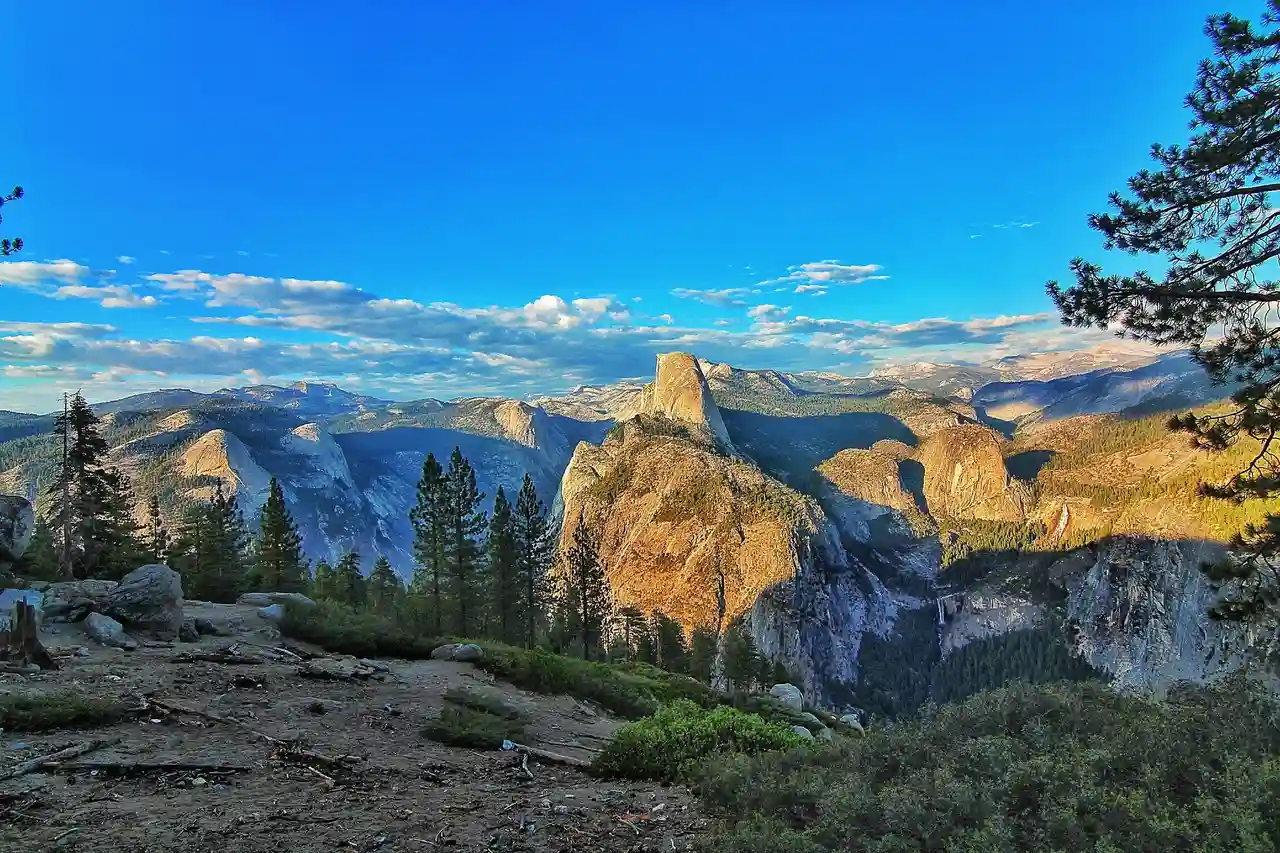
Follow the trails through the granite wonderland of Yosemite National Park, home to some of the most famous rock formations in America. Half Dome and El Capitan tower over Yosemite Valley, drawing both casual hikers and experienced climbers from around the world. Take the Mist Trail to get up close to Vernal and Nevada Falls, where the spray from the waterfalls keeps you cool on warm summer days. For a more peaceful experience, head to Tuolumne Meadows, where wildflowers carpet the ground in spring and the crowds thin out considerably.
Mount Washington, New Hampshire
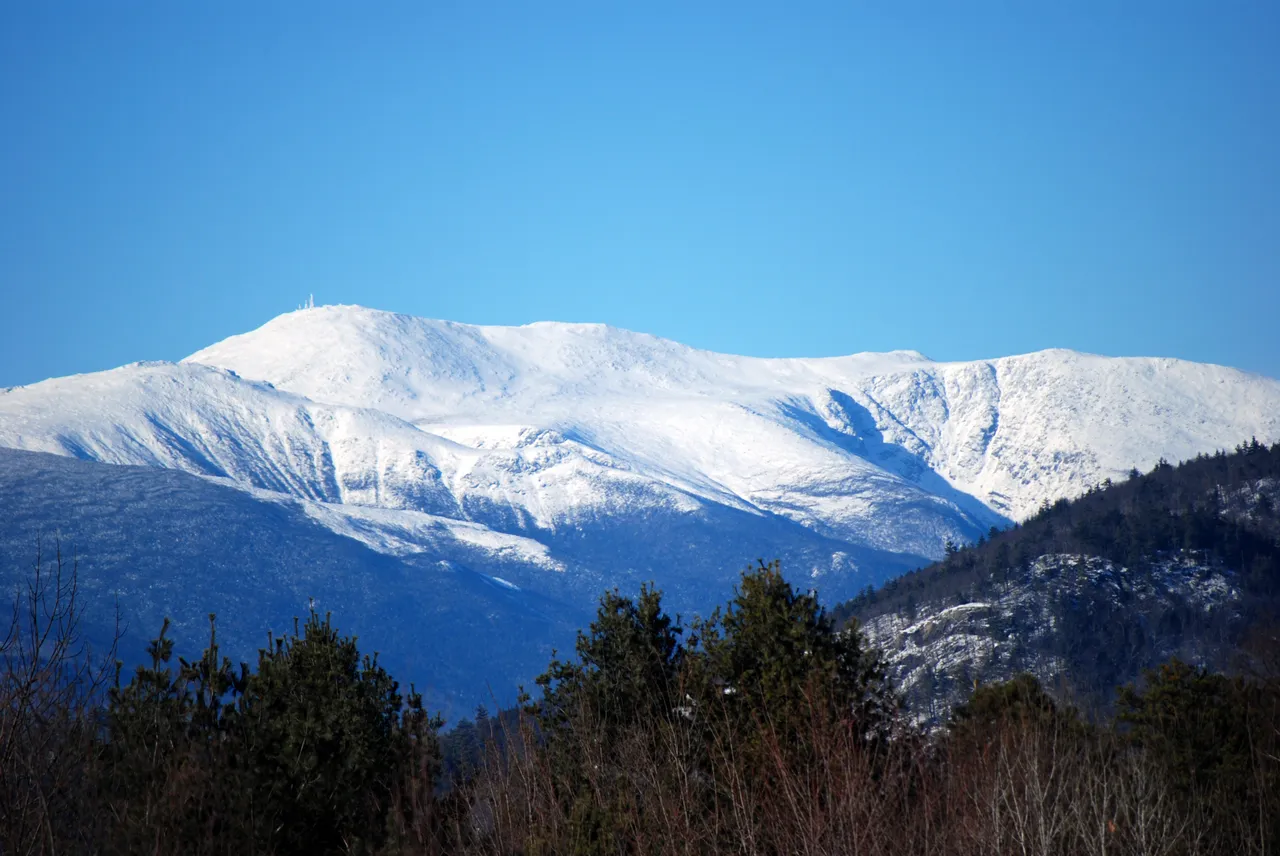
If you’re up for a true mountain adventure in the Northeast, Mount Washington should be at the top of your list. Rising 6,288 feet above New Hampshire’s White Mountains, this peak is famous for having some of the most extreme weather in North America – including a wind speed record of 231 mph. The 8.2-mile Tuckerman Ravine Trail leads hikers through dense forest before opening up to panoramic views of four surrounding states and even the Atlantic Ocean on clear days.
Cool Fact:
While Mount Washington holds the record for the highest wind speed ever recorded on Earth at a mind-boggling 231 mph back in 1934, what’s even wilder is that the peak experiences hurricane-force winds over 100 mph on average every third day of the year. The mountain’s brutal conditions have earned it the nickname “Home of the World’s Worst Weather,” making it a bucket-list destination for weather enthusiasts and adventurous hikers who want to test their mettle against Mother Nature’s fury.
Zion National Park, Utah
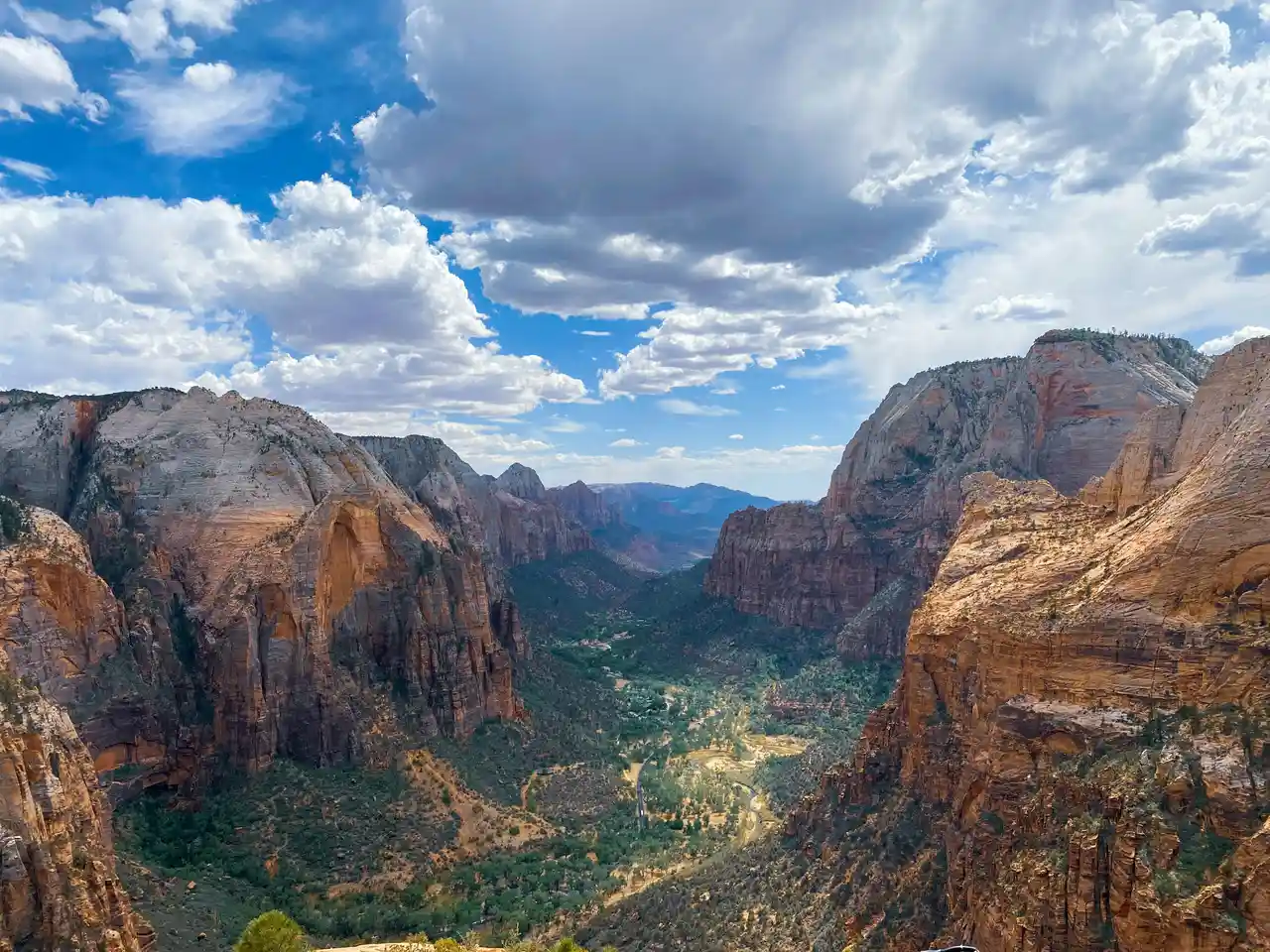
Ever hiked between towering red rock walls that seem to touch the sky? That’s just another day in Zion National Park, where rust-colored cliffs rise 2,000 feet above a valley floor dotted with cottonwood trees. The park’s most famous trek, Angels Landing, challenges hikers with a nerve-testing climb up steel chains to reach views that stretch across the entire canyon. But don’t worry if that’s not your style – the park’s Emerald Pools trail offers a gentler path past trickling waterfalls and hanging gardens. When summer hits, locals know to head straight for the Narrows, where you can wade through cool river water between soaring canyon walls, sometimes barely wide enough to stretch out your arms.
Great Smoky Mountains National Park, Tennessee
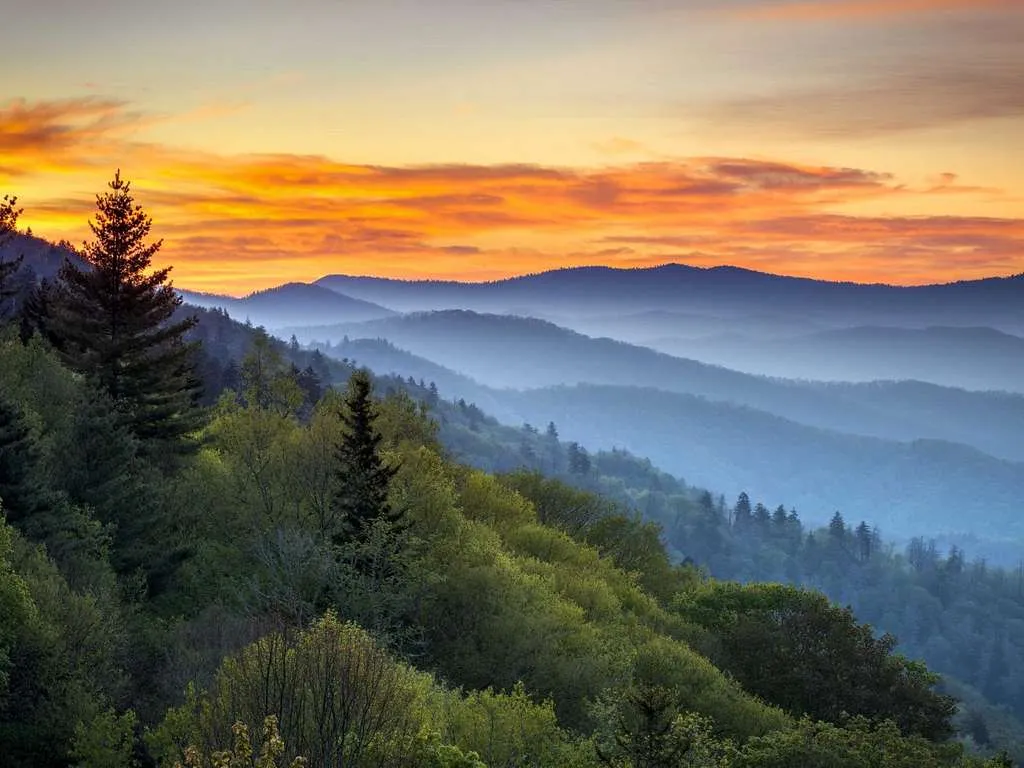
Just a few hours east of Nashville sits one of America’s most beloved national parks – Great Smoky Mountains. Straddling Tennessee and North Carolina, this park offers something that appeals to both casual walkers and serious hikers alike. The park gets its name from the natural fog that often hangs over the mountains, creating a blue-gray haze that looks like smoke from a distance. You’ll find over 850 miles of trails here, including a portion of the famous Appalachian Trail, winding through dense forests and past rushing mountain streams. Because the park stays open year-round and doesn’t charge an entrance fee, locals often say it’s the most accessible slice of Appalachian wilderness you can find. Keep an eye out for black bears and wild turkeys – they’re regular residents who don’t seem to mind sharing their home with curious hikers.
Mount Rainier National Park, Washington
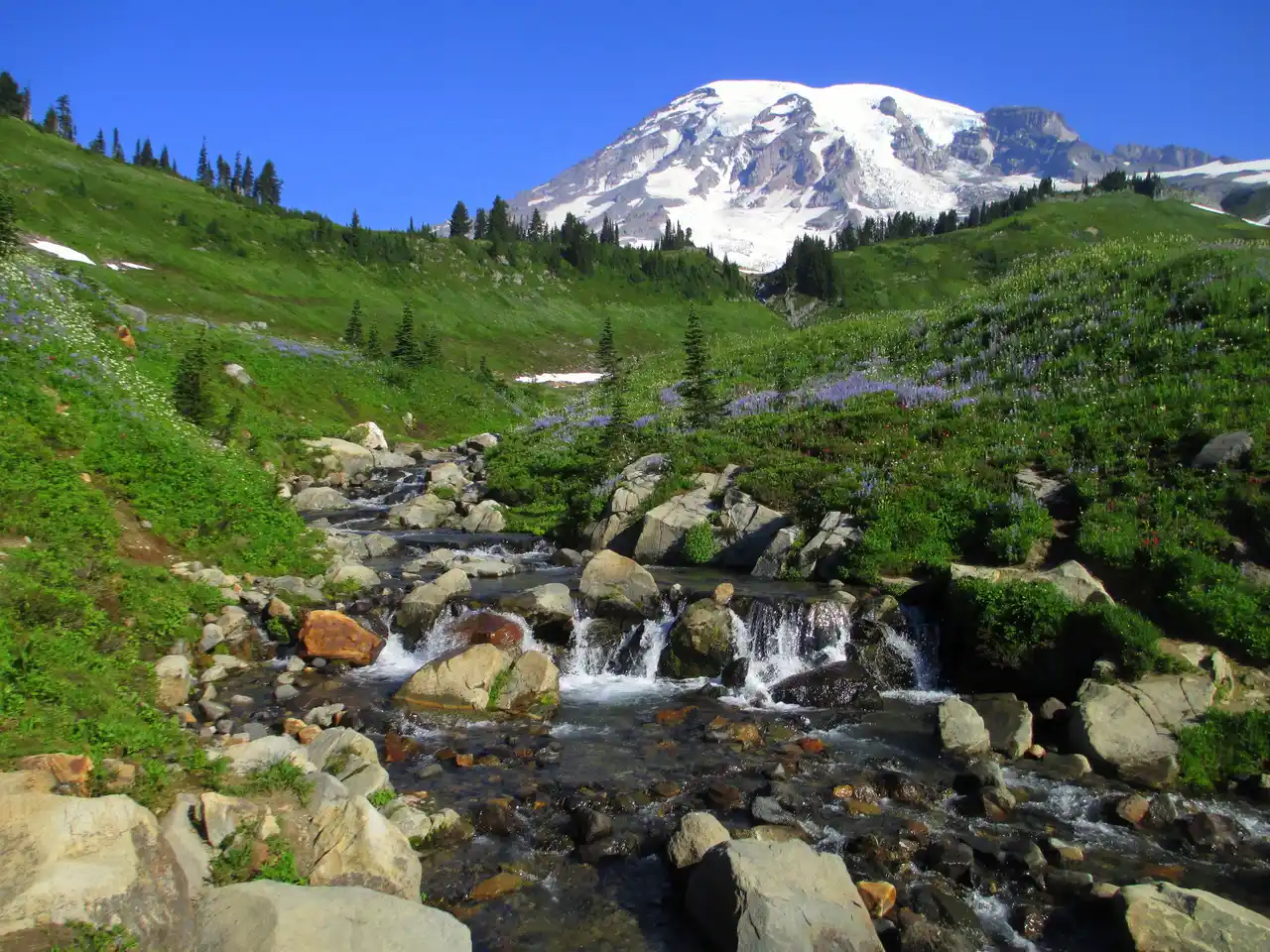
Ever spotted a mountain goat casually grazing above the clouds? That’s just another day at Mount Rainier National Park, where an active volcano towers 14,411 feet above Washington state’s evergreen landscape. This iconic peak, just a two-hour drive from Seattle, offers more than 260 miles of well-maintained trails winding through wildflower meadows and ancient forests. From July to August, Paradise Valley lives up to its name when the meadows burst into color with purple lupines and red paintbrush flowers. You can tackle the famous Wonderland Trail, a 93-mile loop around the mountain, or opt for shorter day hikes like the Skyline Trail, where you might spot black bears foraging for berries in summer.
Sedona Red Rock Trails, Arizona
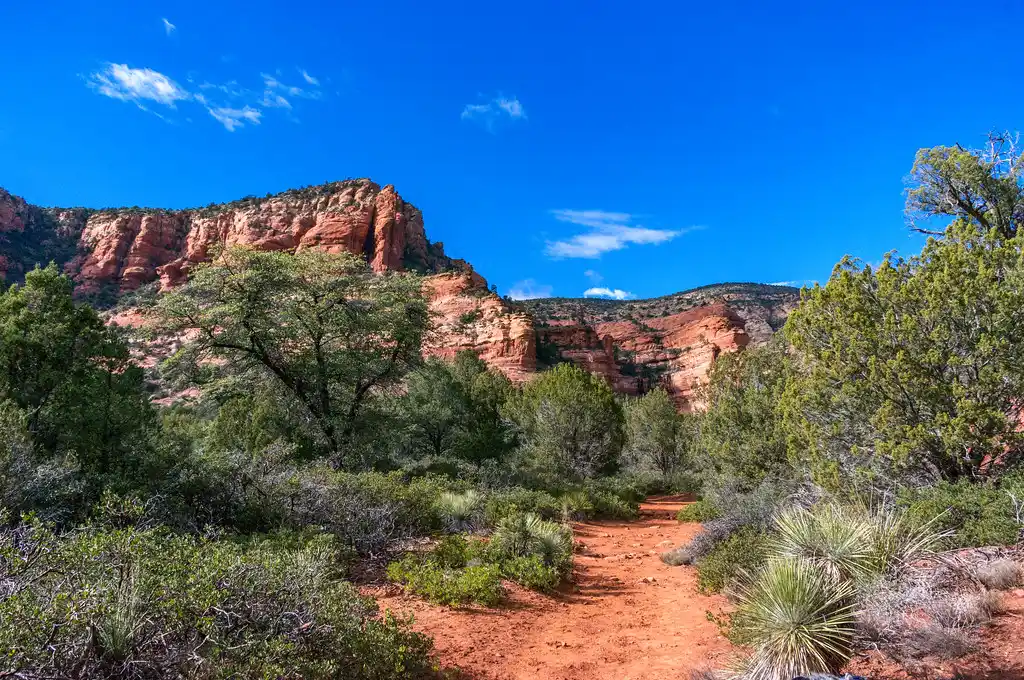
Sedona’s red rock trails hold a special place in my heart, unlike any other hiking destination in the Southwest. The network of paths winds through rust-colored cliffs and distinctive rock formations that seem to glow at sunrise and sunset. You’ll find over 200 miles of well-marked trails suitable for both quick morning walks and full-day adventures, each offering its own window into Arizona’s unique desert landscape. The paths here aren’t just about the views – they’re known for their spiritual energy centers called vortexes, where hikers often pause to soak in the peaceful desert atmosphere. It’s a place where you can tackle challenging climbs up Cathedral Rock or take an easy stroll through Bell Rock Pathway, all while spotting local wildlife and ancient Native American cliff dwellings along the way.
Rocky Mountain National Park, Colorado
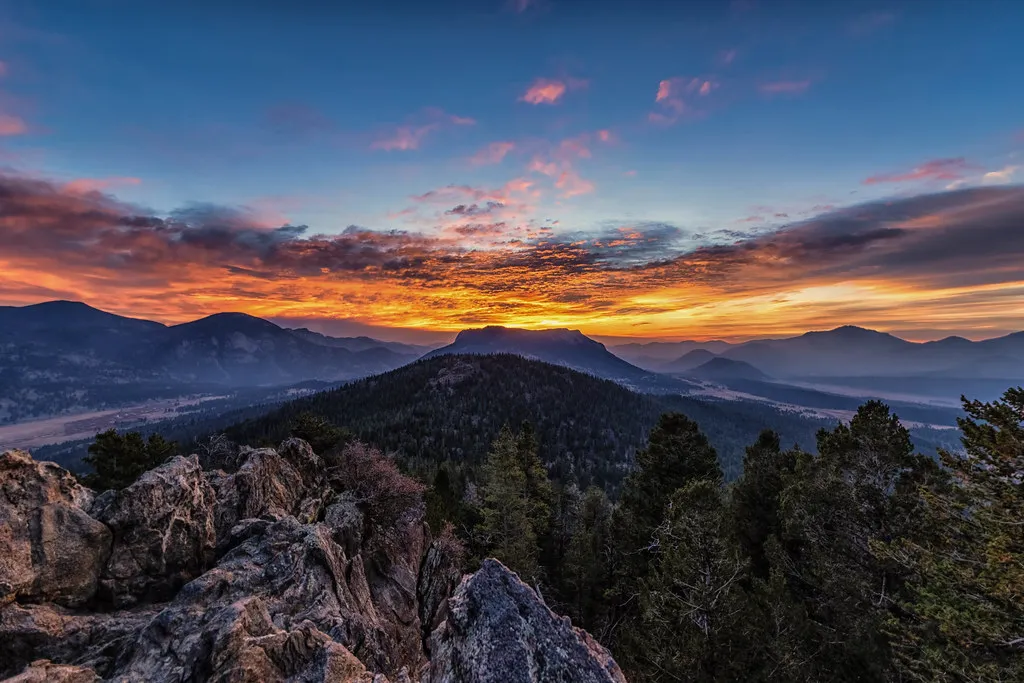
Just 90 minutes northwest of Denver lies Rocky Mountain National Park, where peaks soar above 14,000 feet and wildlife roams freely across the landscape. Unlike other mountain destinations that get overrun with tourists, this park maintains a wild, untamed feel even during peak season. You’ll find over 350 miles of hiking trails winding through meadows filled with elk, across alpine tundra, and past clear mountain lakes. What makes this park special is its accessibility – you can drive the famous Trail Ridge Road to see panoramic views, or venture deep into the backcountry where few visitors go. Because of its location straddling the Continental Divide, the park offers distinctly different experiences on its east and west sides, from the gentle meadows of Moraine Park to the rugged peaks around Bear Lake.
Acadia National Park, Maine
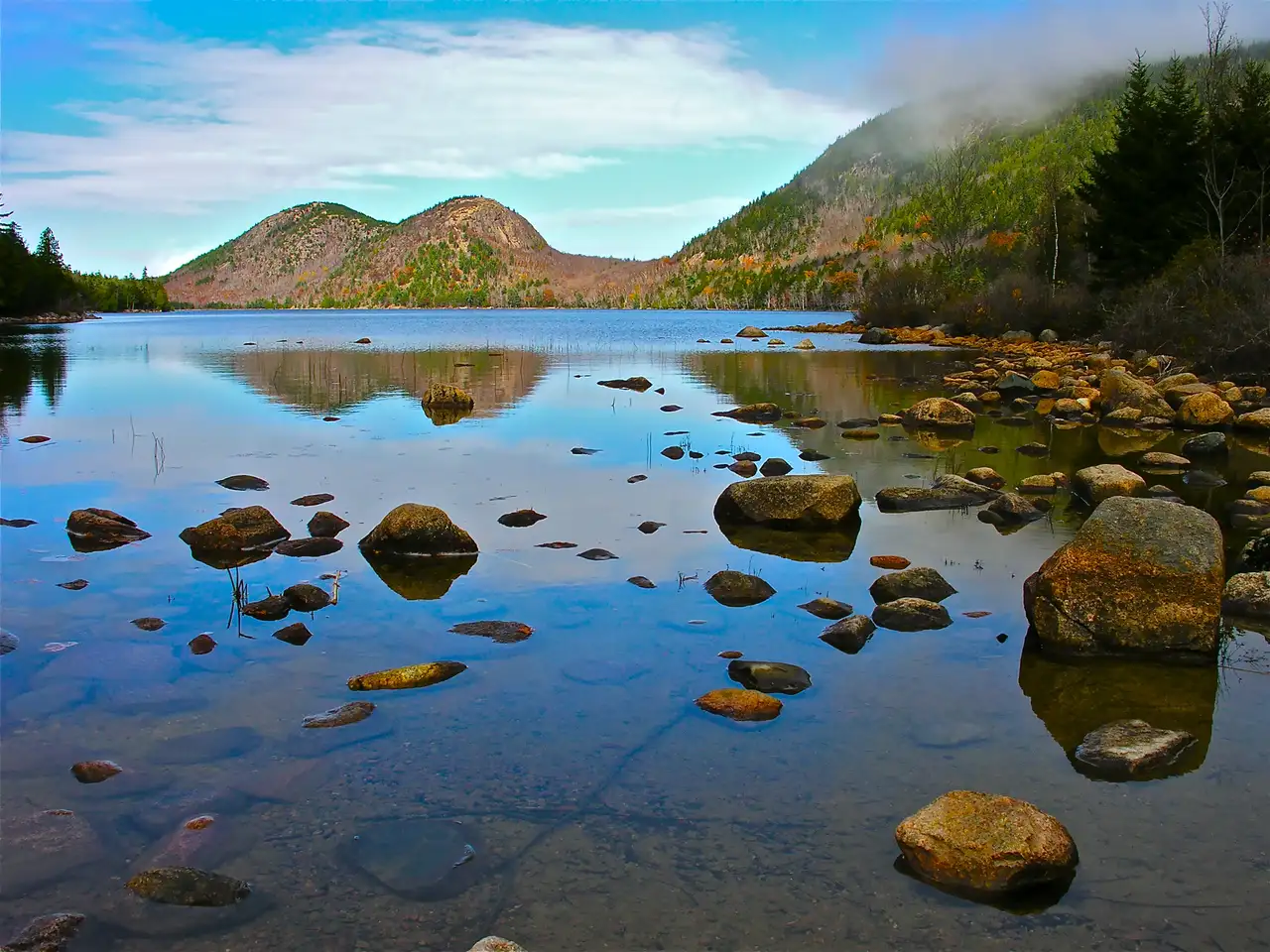
Explore the rugged coastline of Maine when you visit Acadia National Park, where granite cliffs meet the Atlantic Ocean. The park’s 120 miles of hiking trails take you through diverse landscapes, from rocky beaches to pine forests and up Cadillac Mountain – the first place to see sunrise in the United States. For an iconic experience, follow the Ocean Path trail, which winds along the shore past Thunder Hole, where waves crash into a natural rock inlet creating a roaring sound. After your hike, stop by Jordan Pond House for their famous popovers and tea while overlooking the pristine waters of Jordan Pond.
Olympic National Park, Washington
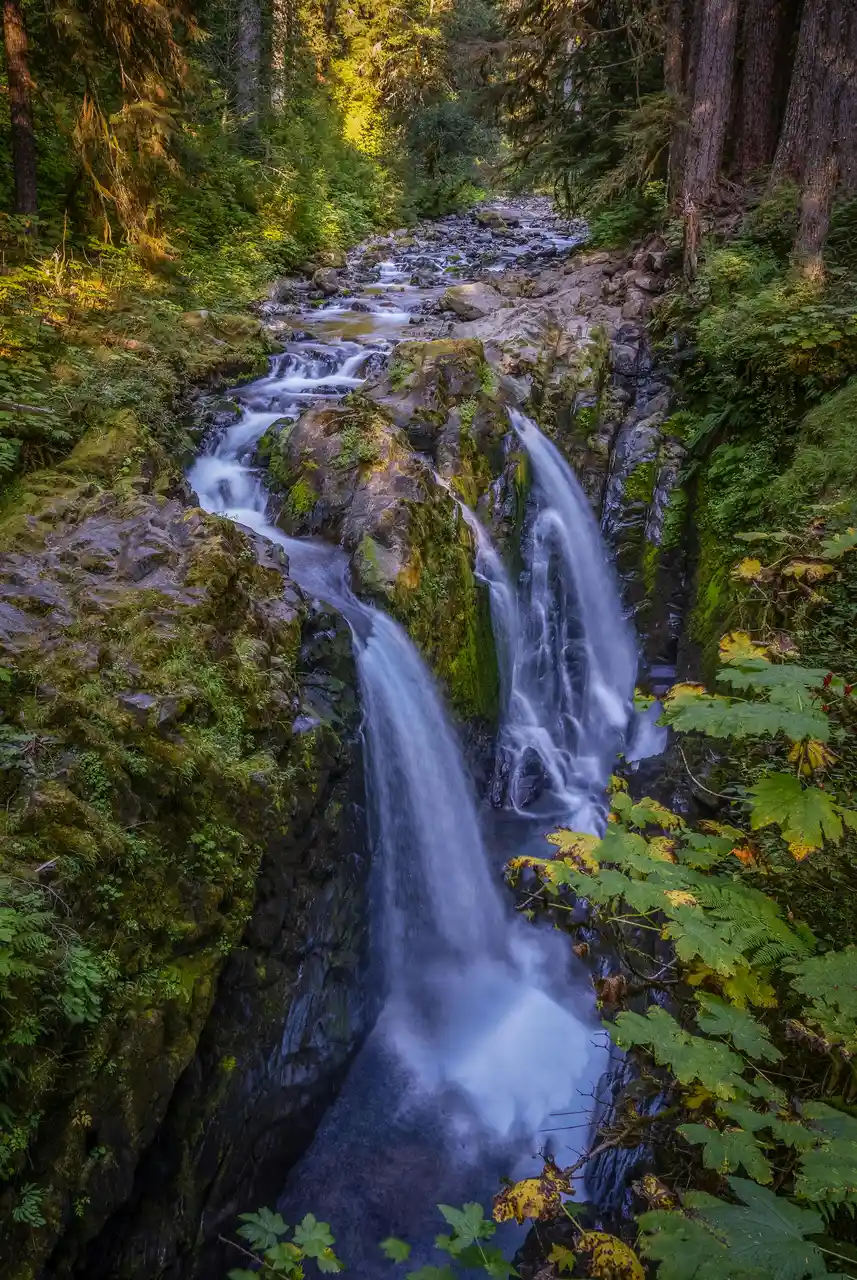
Experience three distinct ecosystems when you explore Olympic National Park in Washington state. This diverse wilderness lets you hike through temperate rainforests draped in moss, along rugged Pacific coastline with tide pools and driftwood, and up into alpine meadows dotted with wildflowers. The Hoh River Trail takes you deep into one of North America’s largest temperate rainforests, where Roosevelt elk roam freely among towering spruce and hemlock trees. For a challenging day hike, tackle the 5.1-mile trek to Hurricane Ridge, where you’ll get clear views of glacier-capped mountains and, on good days, can spot Vancouver Island in the distance.
Shenandoah National Park, Virginia

Hikers flock to Shenandoah National Park for the famous Appalachian Trail, but this Virginia gem offers much more than just one long-distance path. The park stretches across 200,000 acres of protected wilderness in the Blue Ridge Mountains, where over 500 miles of trails wind through dense forests and open meadows. In autumn, the tree-covered mountains put on a colorful show as leaves turn golden and red, making it an especially good time to tackle popular routes like Old Rag Mountain or White Oak Canyon. While the park gets busy during peak fall weekends, you can find quiet spots year-round on lesser-known trails, and the park’s proximity to Washington D.C. makes it perfect for quick weekend escapes from the city.
Big Sur Trails, California

Hugging the rugged California coastline between Carmel and San Simeon, Big Sur offers some of the most rewarding hiking trails in the country. While many people drive through on Highway 1 to snap photos of the ocean views, the real magic happens when you venture into the hills on foot. The trails here weave through towering redwood groves, climb coastal cliffs, and lead to hidden beaches where sea lions often lounge in the sun. What makes Big Sur truly special is how it brings together two distinct worlds – on one side, you’ve got the endless blue Pacific, and on the other, the Santa Lucia Mountains rise dramatically from the shore. Thanks to the area’s strict development restrictions, the landscape looks almost exactly as it did centuries ago, giving hikers a rare glimpse into California’s wild past.
Grand Canyon National Park, Arizona
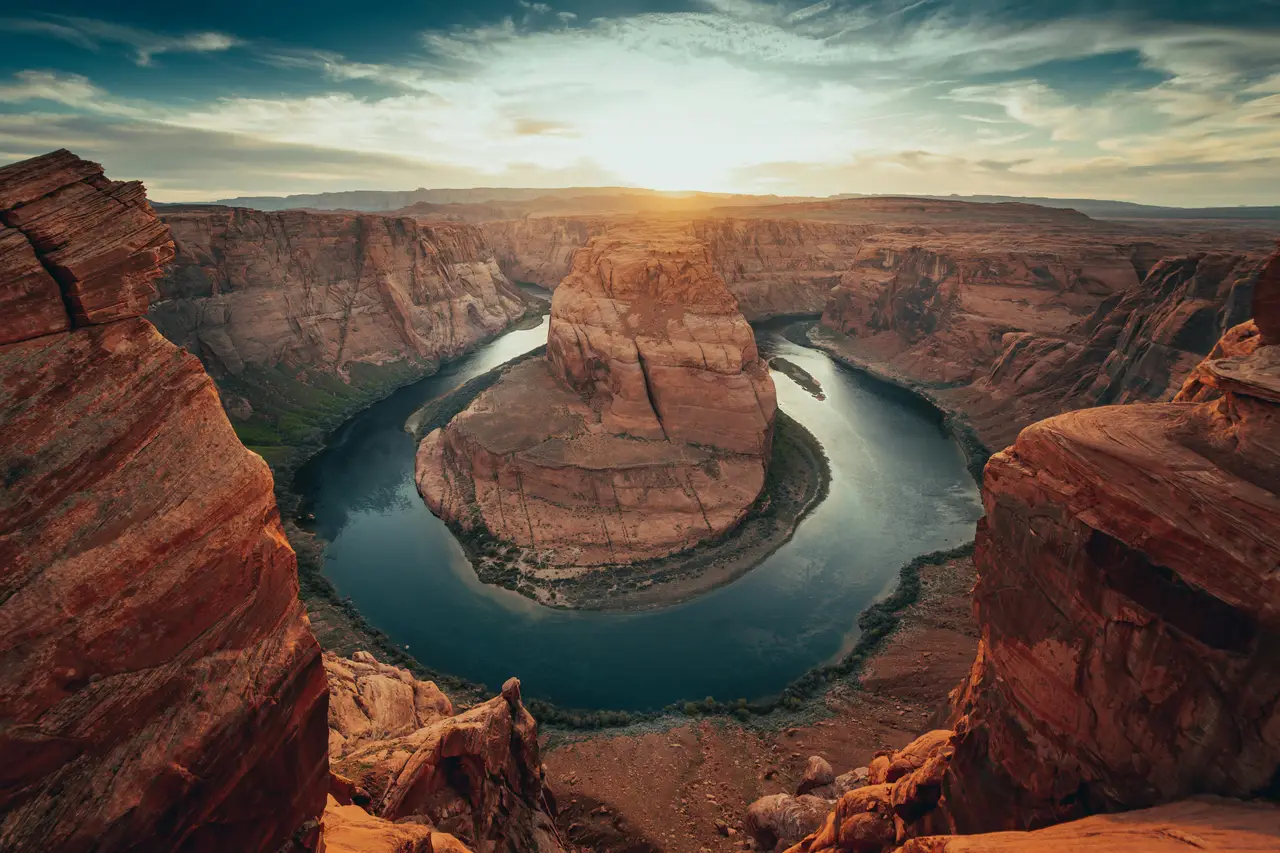
Step into one of nature’s greatest wonders at the Grand Canyon National Park, where the Colorado River has carved a massive gorge stretching 277 miles. The South Rim offers several day hikes like the popular Bright Angel Trail, where you can trek down into the canyon and experience its layered rock formations up close. For a more challenging adventure, take on the rim-to-rim hike, which typically requires 2-3 days and lets you experience both the North and South sides of the canyon. Stop at Indian Garden Campground along the way, where you can rest under shady cottonwood trees and refill your water bottles before continuing your journey.
Mount Hood, Oregon
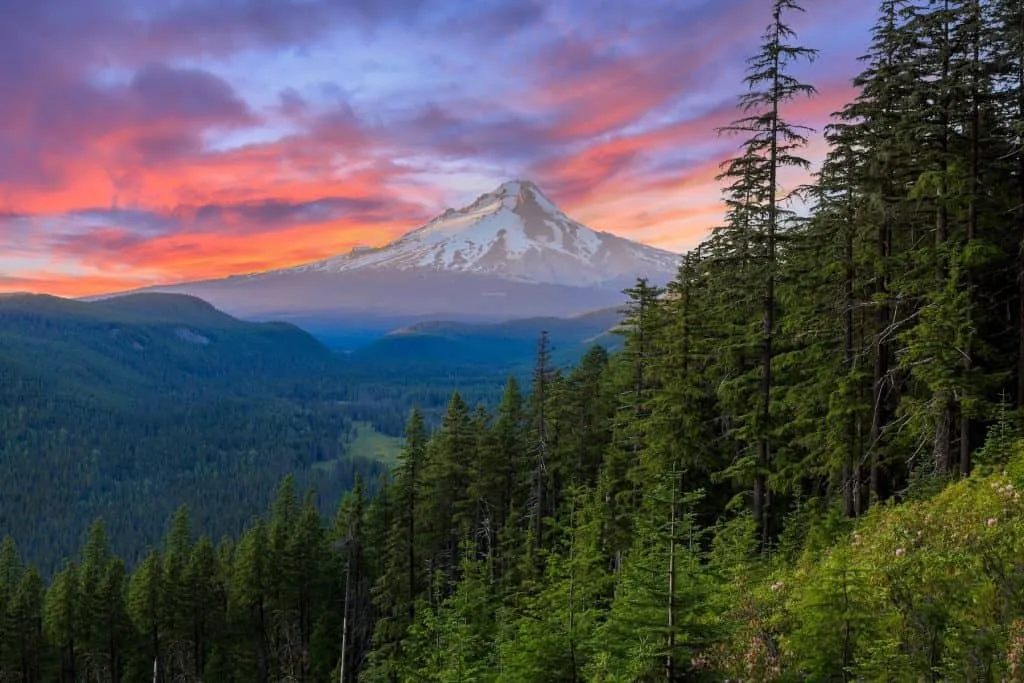
Just an hour east of Portland, Mount Hood stands as Oregon’s tallest peak and a magnet for outdoor enthusiasts seeking weekend adventures. The mountain’s year-round snow-capped summit serves as both a scenic backdrop and playground for hikers tackling the network of trails that wind through its forests and meadows. While many visitors come for the Mirror Lake Loop’s famous mountain reflections, the area offers multiple hiking options ranging from the gentle Trillium Lake path to the more challenging Timberline Trail that circles the entire mountain. During summer months, wildflowers carpet the slopes and alpine meadows, but you’ll find dedicated hikers exploring Mount Hood’s lower elevations throughout the year, each season offering its own distinct character and charm.
White Mountains, New Hampshire
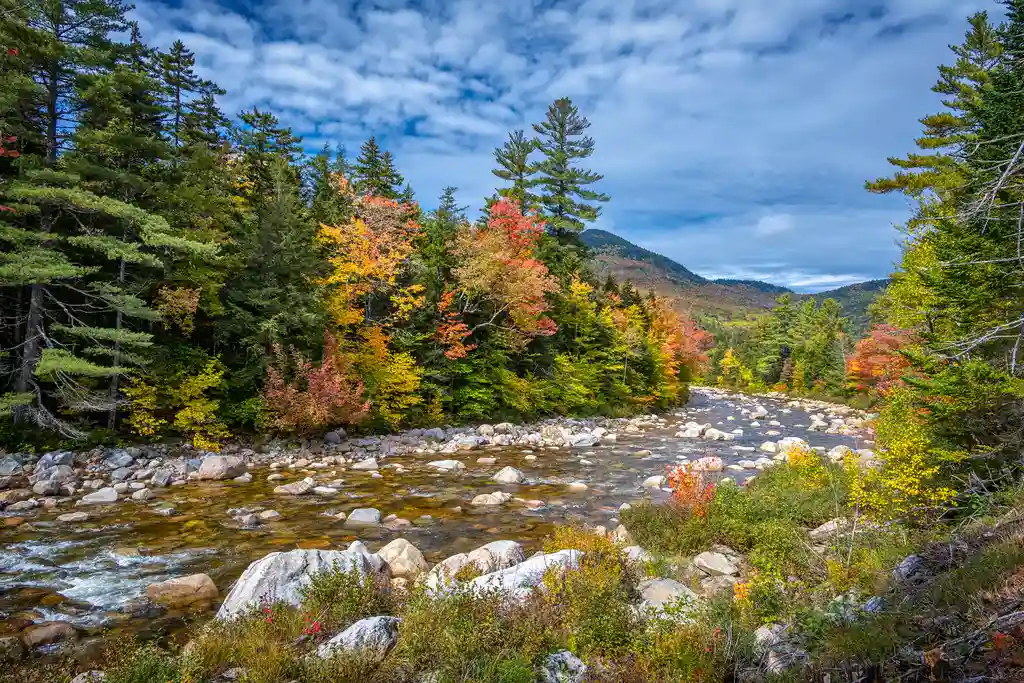
I first visited the White Mountains of New Hampshire on a crisp autumn weekend in 2018. Stretching across nearly a quarter of the state, this rugged section of the Appalachian Mountains offers some of the most rewarding hiking trails in New England. Mount Washington, the range’s highest peak, anchors the Presidential Range, where hikers navigate rocky paths that wind through dense forest and above the treeline. The Appalachian Mountain Club maintains a network of rustic huts along the trails, providing welcome shelter and hot meals to weary hikers. These mountains may not reach the heights of their western cousins, but their challenging terrain and ever-changing weather conditions have earned them deep respect among experienced hikers.
Joshua Tree National Park, California
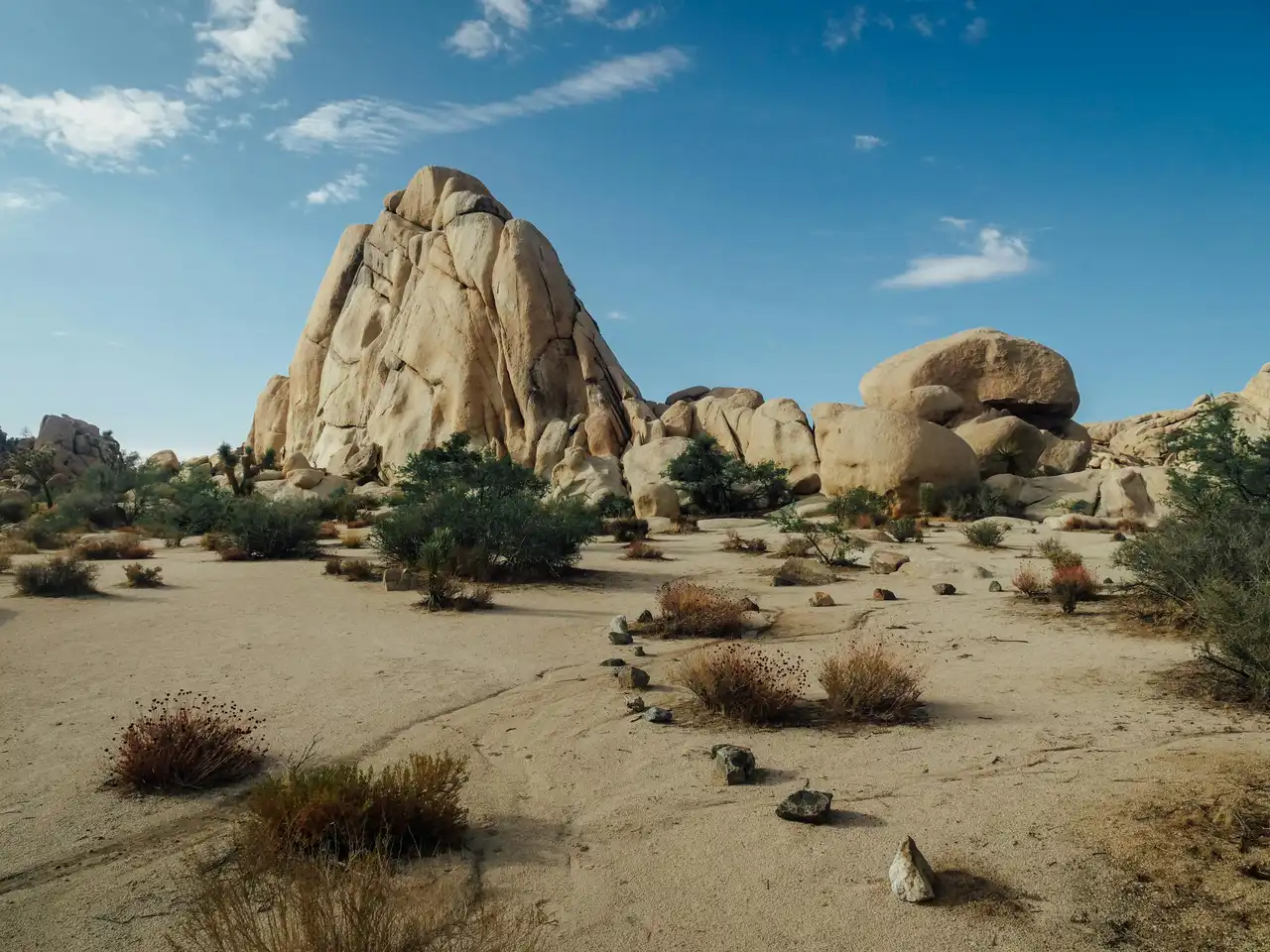
Step into a surreal desert landscape at Joshua Tree National Park, where two distinct ecosystems meet in Southern California. The park’s namesake Joshua trees dot the terrain like natural sculptures, creating an otherworldly scene that feels more like Mars than Earth. You can tackle popular trails like the Hidden Valley Nature Trail, a 1-mile loop that takes you through a rock-enclosed valley once used by cattle rustlers, or challenge yourself with the 7.2-mile trek to the top of Ryan Mountain. For rock climbing enthusiasts, the park offers over 8,000 established routes, making it a prime spot for both beginners and experienced climbers to test their skills on the massive granite formations.